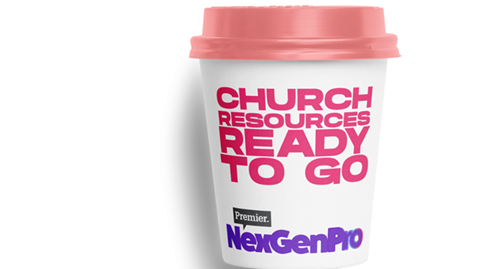- Home
- About
- Topics
- Parenting
- Stories
- Growing faith
 Christian devotions at home for children with additional needs are hard but worth working at
Christian devotions at home for children with additional needs are hard but worth working at Parents are the key to bridging the gap between church and school
Parents are the key to bridging the gap between church and school A tool to help your child ‘take captive every thought’ and walk in freedom with Christ
A tool to help your child ‘take captive every thought’ and walk in freedom with Christ ‘What do you do?’ A Christian mum finds the question triggered more than she expected
‘What do you do?’ A Christian mum finds the question triggered more than she expected
- NexGenPro
- Donate
The Last Supper
By Ro Willoughby is children's and families' community worker for St. Paul's Finchley.

Subscribers only: Download as a PDF here.
This article is for subscribers only - SIGN IN here
If you want to read more, subscribe now for instant access to 1000s of resources, advice, ideas and support for anyone involved in family, youth and children’s ministry.
PLUS receive a weekly newsletter to keep you up to date with what’s new, what’s seasonal and what’s in the news!
If you are already a NexGenPro subscriber, SIGN IN
Related articles
-
 Article
ArticleFinding peace after loss: Trusting God while supporting your child’s grief
2025-04-11T08:25:00Z By Sara Taylor
Grief is one of the most challenging experiences that we endure in life. Whether it arrives suddenly or evolves over time, nothing fully prepares you for the plethora of emotions that it brings. When my father passed away last year, the grief was overwhelming. Though I continue to hold on to my faith, there are days when the weight of his absence feels unbearable, and the notion of ‘healing’ seems distant.
-
 Article
ArticleFrom headlines to hope: How Christian parents can guide youth and children through troubling news
2025-04-10T08:25:00Z By Kate Orson
The news isn’t easy for anyone to hear right now, least of all our children. From war and political divisions, to natural disasters, the headlines are enough to fill a grown adult with terror, let alone a young person.
-
 Article
ArticleA creative world with no imagination – A Minecraft Movie fails to craft a story
2025-04-09T09:23:00Z By Charles Merritt
Film: A Minecraft Movie
More from Resources
-
 Article
ArticleFour parables of Jesus - Session 1-4
2023-07-05T11:17:00Z
Our Together resource is, as always, jam-packed full of ideas and activities to help the children and young people in your groups discover more about God, grow in faith and deepen their friendship with Jesus. Together is a curriculum resource for churches to use in their Sunday ...
-
 Article
ArticleFour parables of Jesus - Session 1-4
2023-07-05T11:13:00Z
Our Together resource is, as always, jam-packed full of ideas and activities to help the children and young people in your groups discover more about God, grow in faith and deepen their friendship with Jesus. Together is a curriculum resource for churches to use in their Sunday ...
-
 Article
ArticleFour parables of Jesus - Session 1-4
2023-07-05T11:09:00Z
Our Together resource is, as always, jam-packed full of ideas and activities to help the children and young people in your groups discover more about God, grow in faith and deepen their friendship with Jesus. Together is a curriculum resource for churches to use in their Sunday ...
- Topics A-Z
- Writers A-Z
- © 2025 NexGen
Site powered by Webvision Cloud





























